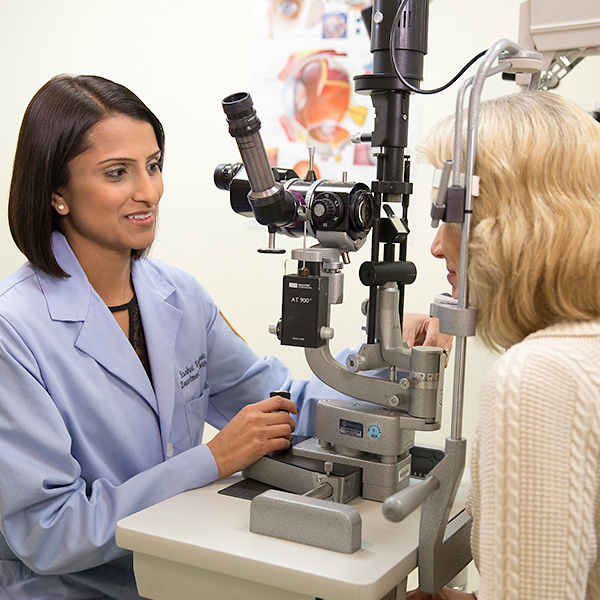Proptosis (Bulging Eye)
Overview and Facts about Proptosis (Bulging Eye)
Proptosis, also known as protruding or bulging eye, is a condition which causes the eyeballs to protrude from the sockets and can occur in one or both eyes.
Typically, it is caused by Graves’ disease, which results in overactivity of the thyroid gland.
Signs and Symptoms of Proptosis (Bulging Eye)
Symptoms of proptosis include:
- Eye soreness
- Dry eyes
- Eye irritation
- Sensitivity to light
- Watery eyes
- Blurred or double vision
- Difficulty moving the eyes
Causes and Risk Factors of Proptosis (Bulging Eye)
Graves’ disease (hyperthyroidism) is the most common cause of proptosis. Between 25 and 50 percent of people who suffer from Graves’ disease will also have this type of ophthalmology condition.
Proptosis can occur up to 10 years before a thyroid disorder is diagnosed, and up to 20 years after. Graves’ disease causes the immune cells to attack the thyroid gland. This autoimmune reaction can also lead to enlargement of the eye muscles and fat surrounding the eye which may push the eyeball forward.
Other causes of proptosis include:
- An eye injury
- A blood clot
- A cancerous or non-cancerous tumor
- Infection of the tissue around the eye (orbital cellulitis)
- Brain abnormalities
Tests and Diagnosis of Proptosis (Bulging Eye)
Your physician will be able to diagnose proptosis by a visual examination. However, other tests need to be done to determine the cause. These tests may include:
- A blood test to make sure the thyroid gland is functioning properly
- Examination with an exophthalmometer, to measure the degree of protrusion
- Imaging scans to examine the eye socket and orbit
- An MRI or CT scan of the brain to assess its structure
Treatment and Care for Proptosis (Bulging Eye)
You will be monitored regularly by an eye specialist and treatment will depend on several factors including your age, general health, and the cause of the proptosis. If you are experiencing thyroid problems, your doctor will prescribe treatment to return hormone levels to normal.
However, treating the thyroid is not enough to resolve proptosis, so additional treatments need to be added. Non-surgical medical options include:
- Lubrication with natural tears
- Glasses to protect against light sensitivity
- Medications to reduce the immune response
- Medications which block certain antibodies
- Corticosteroids
- Low-dose radiotherapy
Surgical treatment options include:
- Eye muscle surgery: to correct abnormal muscles around the eyes.
- Orbital decompression: increasing the eye’s orbit can allow more room for the eyeball and the muscle and tissue surrounding it.
- Eyelid surgery: this protects the cornea and outer eyeball from harm.
Proptosis should be treated as early as possible to avoid permanent damage to the eyes.

Request an Appointment
Whether you are seeking routine eye care or have a specific vision issue, our team treats a wide range of eye diseases and conditions, including cataracts, glaucoma, macular degeneration and strabismus. Schedule an appointment today.
Schedule a Telehealth Appointment
